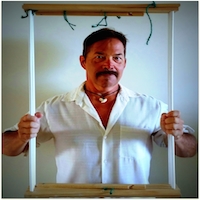She was a brand new yoga teacher and young. When class ended, she asked us to place our hands at heart center.
In that moment, I could hear reticence in her voice. I wondered if she was thinking in the back of her mind, “Fake it till you make it,” something I had once been told when starting a new job with leadership responsibilities.
Her prayer was not well-practiced. She stumbled once or twice, and didn’t have all the right words carefully lined up, as a “professional” prayer would have, yet I was moved by her simple words, the brief blessing. Her words were true, honest and flawed certainly, but more importantly, she was sincere.
An amateur’s prayer from this shy public speaker at the end of a yoga class meant more to me than 99.9 percent of the other million words I’ve heard prayed by experts.
In our day, when so much is insincere and false, when we’re drowned in words that mean nothing, yet are pronounced as edicts, sounding more righteous than any Shakespearean sound and fury, I’m happy to listen to anyone who produces words thoroughly grounded in honesty and dressed in sincerity.
There’s a tendency these days to demean anything less than perfection. This leads us to become more competitive and critical. But if we demand perfection from ourselves or others, we actually end up turning ourselves into thirsty beings in the desert, unable to appreciate a light rainfall because we’re looking for lots of water.
Perhaps it’s just me, but if I’m offered two of anything, I’ll take one and be grateful for it. I prefer tuning up the aesthetic rather than blasting through life accumulating more material. Having one well-tuned guitar is better than owning five, with four of them out of tune.
I’m coming to a better understanding that less really is more, especially with prayer. And what is prayer? Some say prayer is listening. I like that idea. Following class, I thanked the new teacher and told her I appreciated her prayer. After a moment, she said she likes painting and enjoys teaching yoga. I wondered about her painting, and thought back to a time in Barcelona when I visited a museum displaying some of Picasso’s early art.
Picasso’s first experiments in cubism were visible through the fading colors in some of his small early works. I loved seeing those geometric designs bleeding through his traditional work; I thought the bold strokes underneath registered the first step of mastery: taking a risk and faking it till making it.
In time, this new yoga teacher and painter will conquer her awkwardness with public prayer. Her painting will include the canvas of souls sitting in front of her. Her words will become fluid, well-practiced and confident. But I will always be moved by bad prayers because they’re formed out of heartfelt sincerity, and as the least-practiced prayers, they are, I think, the best prayers.
Author: Gregory Ormson
Editor: Evan Yerburgh
Image: Flickr
~
Reference:
*Hall, D. (2014). A House Without a Door. In Essays After Eighty. Houghton Mifflin Harcourt, p. 121









Read 0 comments and reply